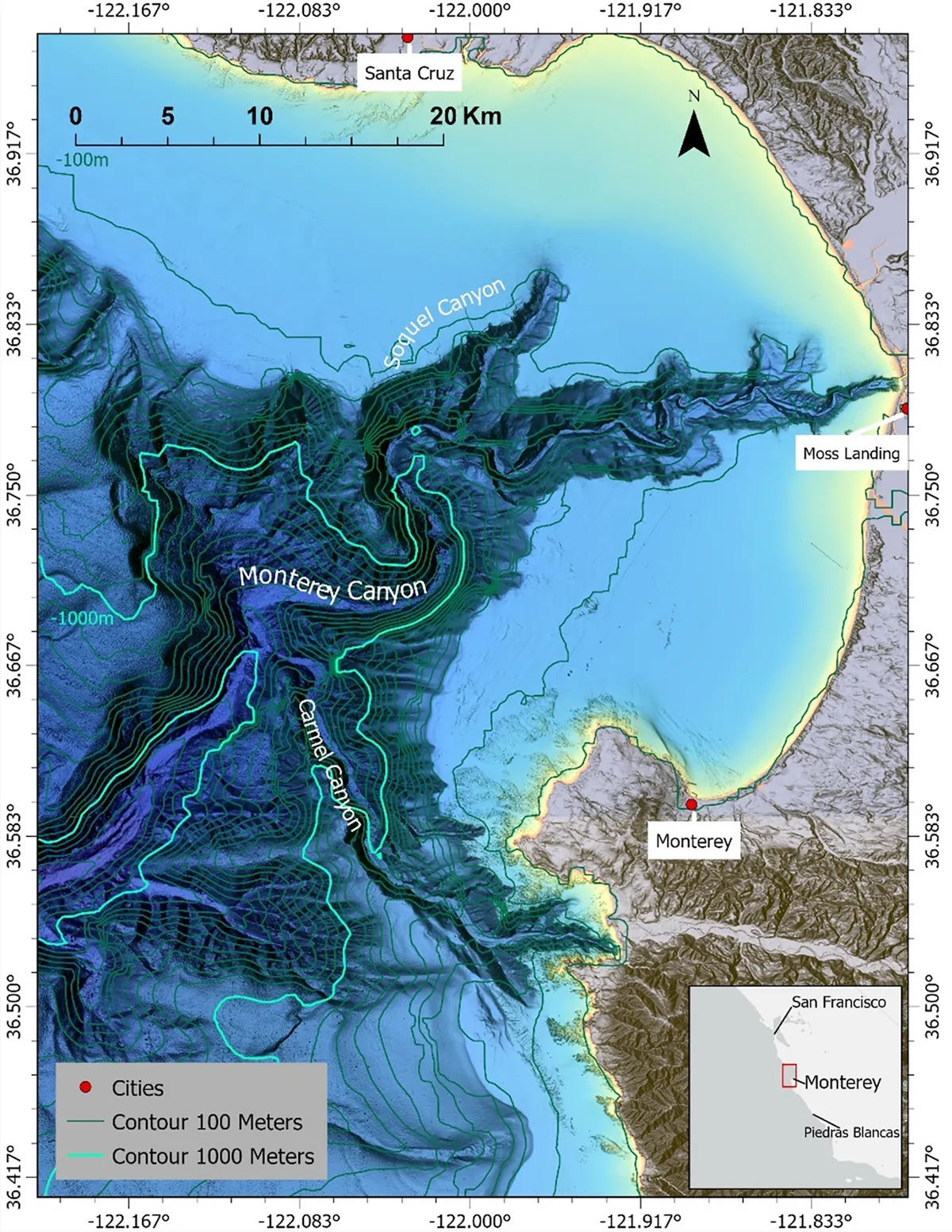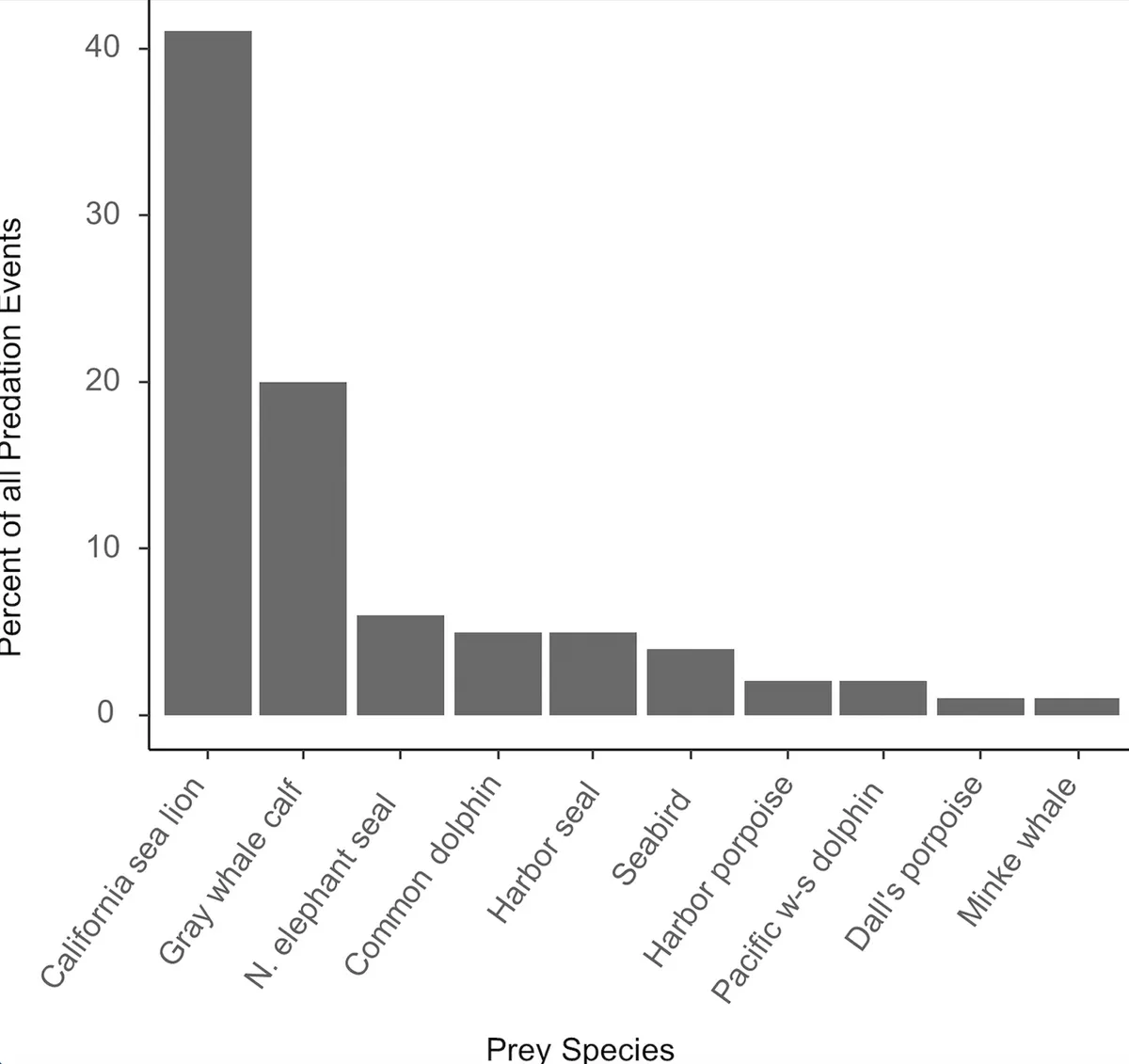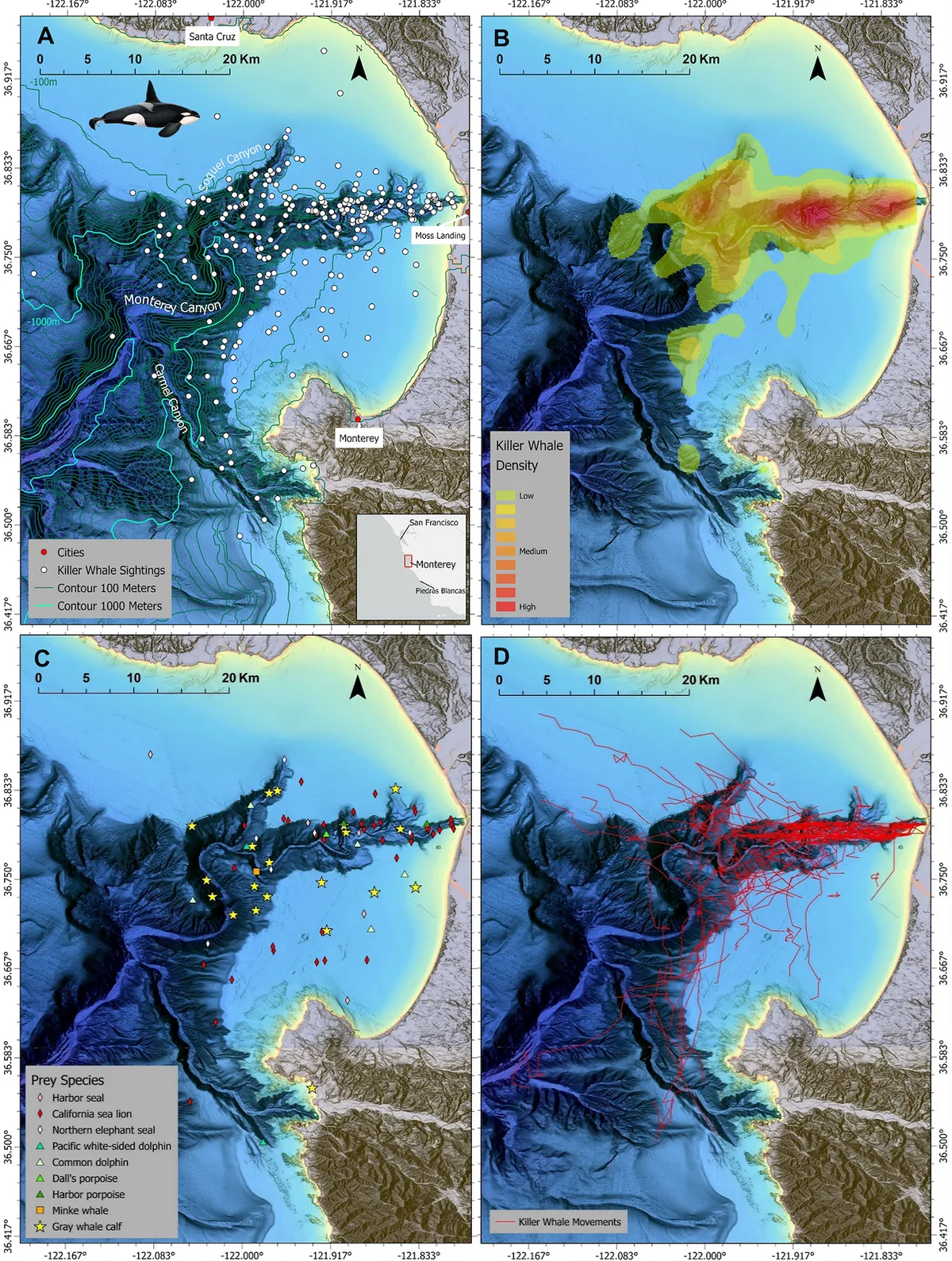Killer whales (Orcinus orca) live in oceans around the world, yet they form distinct populations – or 'ecotypes' – each characterised by unique social dynamics, dietary preferences and hunting strategies.
Transient killer whales, an ecotype that specialises in hunting marine mammals, can be divided into two subpopulations: inner coast whales that feed in shallow coastal waters, and outer coast whales that hunt in deep water. Not a lot is known about these outer coast whales.
Now, new research lead by Josh McInnes from the University of British Columbia, and published in PLOS one, suggests that outer coast killer whales that forage in deep submarine canyons off the coast of California use specialised hunting techniques to catch marine mammals.
- Watch: Astonishing ‘explosion of life’ coral spawning in Cambodia stuns scientists
- 100 new ocean species discovered off the coast of New Zealand
- There’s a fish in Tasmania with hands instead of fins, and scientists are about to save it from extinction

Using data compiled from marine mammal surveys between 2006 and 2018, and whale-watching ecotours between 2014 and 2021, McInnes and fellow researchers investigated the foraging behaviour of outer coast transient killer whales around Monterey Submarine Canyon in California.
The results showed that the subpopulation spent 51% of their time searching for prey, while 10% was spent pursuing prey, 23% feeding, 9% travelling, 6% socialising and 1% resting. The killer whales mainly hunted California sea lions, grey whale calves, northern elephant seals, common dolphins and harbour seals.

Two main types of foraging behaviour were found: distributed groups diving independently in the open water, and closely coordinated groups foraging along the edges of the submarine canyons.
Once within reach of their prey, the transient killer whales used specialised techniques to subdue them, such as ramming with their head or body or using their tail to hit or catapult sea lions into the air.

"This study highlights the complex foraging behaviour and ecology of transients and how they act as apex predators in productive deep submarine canyon systems," says McInnes.
The authors say that the distinct foraging behaviours of the outer coast whales may be passed from generation to generation.
Find out more about the study: Foraging behaviour and ecology of transient killer whales within a deep submarine canyon system
